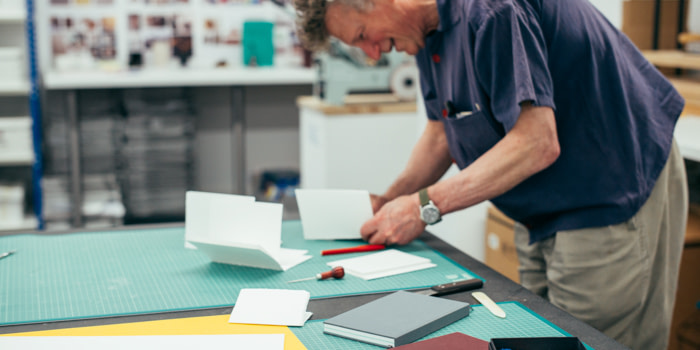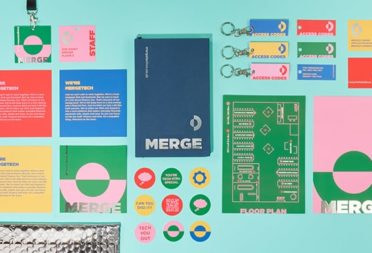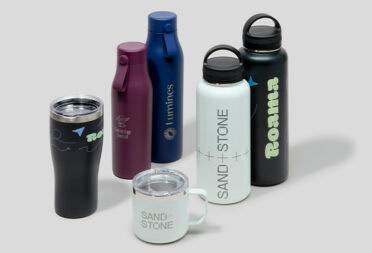Douglas Bevans, bookbinder

There’s something irreplaceable about putting pen to paper, whether you’re scribbling midnight ideas or jotting down a morning checklist. That’s one of the reasons we launched our new Hardcover Notebook. That and the fact we have an obsessive love of paper, of course.
Douglas Bevans, tutor at London’s Central Saint Martins art school and bookbinder, shares this love – and has done since setting foot in his grandfather’s San Francisco typesetting shop. We invited him to MOO HQ to talk about paper, illustration, binding – and why you can never have enough notebooks.

How did you come to be a bookbinder?
After working at my grandfather’s typesetting shop, I went to art school about six blocks from there and studied print-making, which I felt was somewhere between design and fine art. The love of bookbinding grew out of that because I didn’t really like things to go on a wall, I preferred things you could use. I was pursuing a career in illustration in the US, until I made the move across the pond in ’85.

What enticed you to move to London?
That’s a long story. There was a girl involved. The decision to stay here was instantaneous. I remember getting off the plane and taking the Piccadilly line into town. Each time the train would stop I’d look out and see a station full of illustrations. At that time photography had really taken over back where I was working in Los Angeles, so I was really happy to see illustration in abundance in London. I remember thinking to myself, “is this the promised land?”
What is so special about paper?
I’m obsessed with it. It’s an everyday thing you can make art with. It’s everywhere, yet you can make something fantastic out of it. It has that wonderful kind of commonality – you could make a hundred prints and give them to all your friends, but you could also make one print and sell it in a gallery. You can make anything with it – coffee cups, newspapers, clothes, money. It’s just fascinating.
What is it about bookbinding that appeals to you?
Whatever your medium, it’s important to know what came before. It’s interesting because not many people could afford a real fancy binding, so the most beautiful books – especially during the 16th and 17th century – would be printed in the same way but come with a paper wrapper. Not even attached like a paperback book – it was just a piece of paper wrapped around with the idea that you would some day get it bound. There’s so many fascinating processes; sewn, coptic, glued.
Do you carry a notebook?
Several. I carry a small one in my top pocket, as well as a larger one in my bag. I use them mostly for drawing and jotting down things I hear or think. I still find it a lot more natural than getting out my phone for a memo.
What makes the ideal notebook?
Apart from the quality of the paper, it depends what I use it for. Overall it’s got to be the ability for the pages to lie completely flat. Not something you see too often in notebooks as there are few binding processes that allow true lay-flat pages. It means pages will have no curvature and you can write as close to the centre as you need to without your hand placed in an awkward position. It’s much more functional.
Order your MOO Notebook now.
Words and photographs by Josh Fray
Keep in touch
Get design inspiration, business tips and special offers straight to your inbox with our MOOsletter, out every two weeks.









